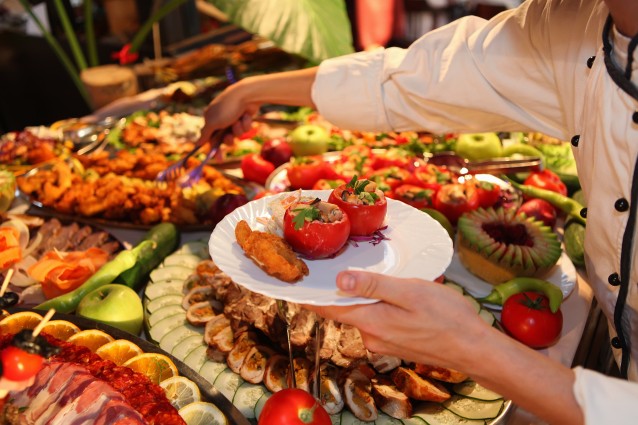While eat-all-you-can buffets started at one time as vast spreads of cheap, mediocre food that no one wanted much of, they are today a luxury business, especially in party towns like Las Vegas. You don’t have to make do anymore with $5 buffets stacked with nothing but macaroni, cheese, slices of cantaloupe and Jell-O. Today’s fancy buffets cost as much as $50, and you can fill up all you want on King crab legs and oysters.
Guests at the best buffets at casinos in Las Vegas, Nevada or Placerville, Northern California benefit in two ways. To begin, these buffets put out a premium spread. When people pay more for their buffets, they also psychologically see it as better tasting. It’s what the research says.
Of course, you like the food, but how do you learn to behave?
It’s one thing to tell yourself before you dive headfirst into a premium buffet that you won’t eat any more than is good for you, and another to remember your resolve once you have a great spread of lobster, filet mignon and crème brûlée in front of you. You don’t want to wake up the following morning feeling bad about having wiped out three months’ worth of gains at the gym. Here are some strategies.
Feast your eyes, not your stomach
Research at Cornell University published in the American Journal of Preventive Medicine has come by an interesting finding. When a person arriving at an eat-all-you-can buffet proceeds to right away help himself, self-control can be hard to come by. A different strategy works better. When a guest instead first walks around, mentally taking in all the great treats on offer, he rarely overeats.
Why should this be? A number of theories exist. Some believe that when people learn about everything that’s available, they want to make sure that they have enough room left over for everything. They begin eating small quantities of different dishes, then, and this approach gives their brains more time to signal fullness. Another theory proposes that when a person who is hungry begins eating the moment he can, he lets a primal anxiety for nourishment take over.
The study also finds that picking a small plate to eat off, using chopsticks instead of a spoon or fork, and sitting facing away from the buffet (or sitting far away from it) can all help.
The mindful eater
It’s been known for long now that the more carefully you eat, chewing well before you swallow, the less you will end up eating. Here, too, it is giving the brain time to process what you’re eating. It helps give the brain time to put out the feeling that it’s sated.
Save the treats for last
Salads, fruit, whole-grain croutons and other healthy foods are very filling at first (even if you can feel hungry soon afterwards). Filing up on them first before you let yourself loose on the high-fat treats is a good plan.
It works far better than telling yourself that you are on a diet. Attempting self-denial only sharpens the appetite. Instead, you can tell yourself that you are free to eat as much of anything as you want, only, you need to wait until you’ve sampled some healthy food. By the time you get to what you really love, you won’t have much room left for it.
Serve yourself with small portions each time
The stomach isn’t just a box that’s full when you fill it. There’s a lot of psychology that goes into when you get to feel filled. One of the rules of psychological satiation is that you can feel full simply by making heavy weather of a meal. Helping yourself with smaller servings will ensure that you keep going back. The greater the number of times that you go back, the fuller and fuller your mind will think your stomach is. You’ll get tired of eating sooner this way.

